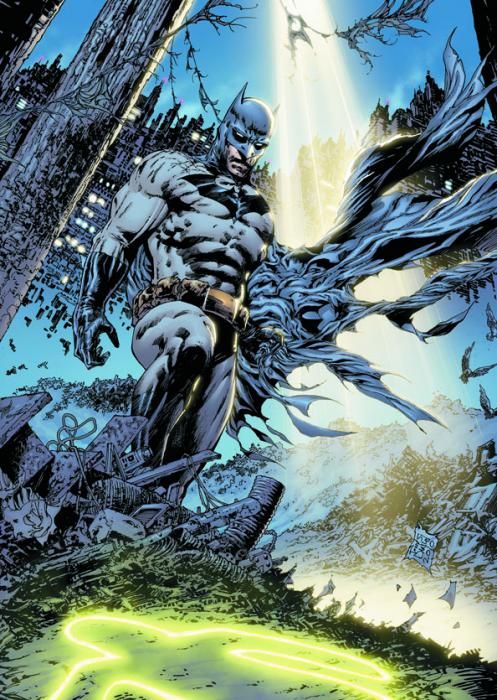I wasn't too sure initially about "Batman" #701-702, with Grant Morrison and Tony Daniel reteaming to provide the 'missing chapter' of "Batman R.I.P.," presumably for all those that complained it was hard to decipher or follow. A two-issue exercise in hand-holding didn't sound too appealing, but I've really enjoyed Morrison's work on the character, so I was in. Issue 701 was exactly what I feared when it presented what happened after the climax of "Batman R.I.P." up until "Final Crisis," filling in 'gaps' that never needed filling. This week's issue 702, though, does something different in its second half as it provides a somewhat essential explanation of what exactly happened to Batman in "Final Crisis" #6 when he shot Darkseid and was hit by the Omega Sanction in response. More than simple gap-filling, Morrison takes this chance to add new elements to the story currently going on in "The Return of Bruce Wayne" and "Batman and Robin."
In the lead-up to Batman's confrontation with Darkseid, Morrison rehashes the hero's place within "Final Crisis" with reworked versions of the events we saw in that mini-series. He does use a new scene with the Flash to establish a big idea about Darkseid and the other New Gods as coming "from a king of platonic, archetypal world," which comes up later when he's up against Darkseid. In many ways, this issue has Morrison continue to push Batman into the territory of myth, of something larger than 'just' a superhero. It fits well into Morrison's conception of superhero comics, their characters, and the universes they live in being more 'real' than our own. They inhabit an entirely different plane of existence.
In the confrontation with Darkseid, Morrison tacitly acknowledges the problem that some had with Batman using a gun to shoot the dark god, but he masks the act in myth and archetypes. The bullet used isn't just a magic bullet, it's the platonic ideal of a bullet. It's the blueprint for every bullet fired and, by using it against the platonic ideal of evil, he's perverting its intended use, changing its purpose. The explanation of the Omega Sanction builds well on the "Seven Soldier: Mister Miracle" series, which showed something similar, while also dropping hints about the true nature of Simon Hurt and leading directly into "The Return of Bruce Wayne" #1.
Tony Daniel drawing this story arc makes sense given that it's titled "R.I.P. The Missing Chapter," but since this issue explores the Batman-centric events of "Final Crisis," it's hard not to compare his work here to the artists that handled that series. Compared to the cleaner, bolder art of JG Jones, Marco Rudy, Carlos Pacheco, and Doug Mahnke, Daniel's work here looks a lot worse. That's not a problem in the new or expanded scenes as much as the ones that are representations of scenes from "Final Crisis." Comparing the first page to the same scene in "Final Crisis" #1, Daniel's art looks overwrought and his figures distorted to laughable degrees (why are Superman's hands so big?).
Later in the issue, his work looks better, specifically in the Omega Sanction scene, where he can distill elements through single meaningful images that are meant to be jump cuts from the previous panels. In that respect, he recalls his art on "Batman R.I.P." much more strongly and it's clear how he's improved in the intervening months.
Not quite the worthless throwaway it might have seemed upon first glance, "Batman" #702 provides some key elements for Grant Morrison's ongoing Batman story, specifically the current "Return of Bruce Wayne." His writing here is poetic and purposeful, and continues his work to elevate the character beyond the limitations of a simple urban vigilante.

